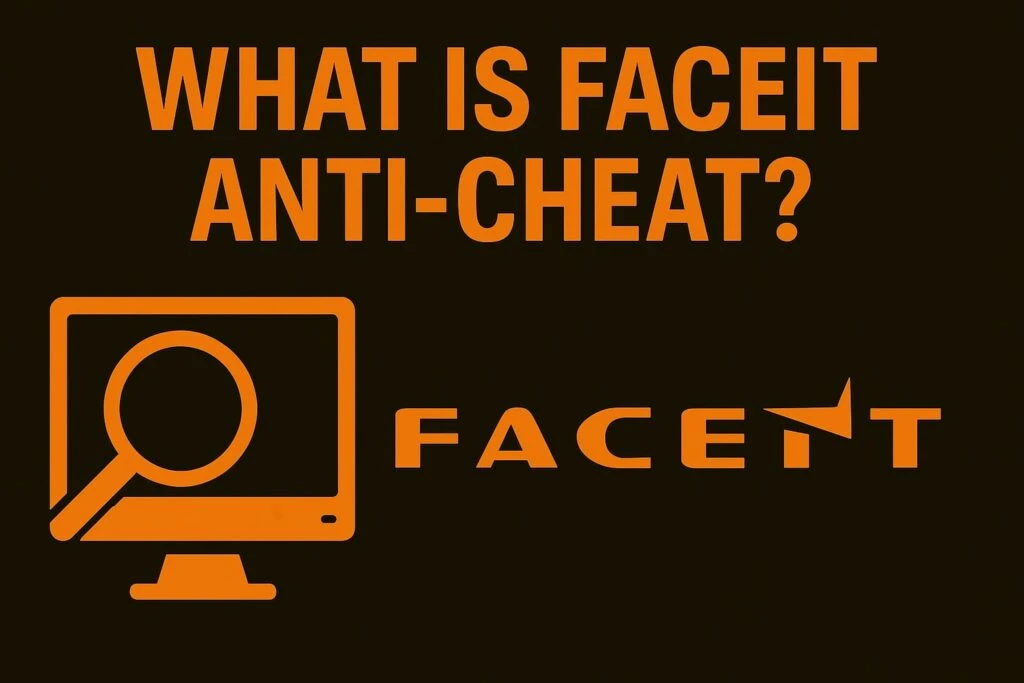For competitive players in CS2 and similar titles, FACEIT represents the gold standard in matchmaking. In this article, we’ll break down exactly how FACEIT anti-cheat works, from how it detects cheats at a system level to how it punishes offenders.
This anti-cheat scans deeper into your system processes, detects drivers, and monitors behaviors even outside the game window.
So, if you’re a curious player or someone looking to use undetected cheats safely, this is your deep dive into knowing one of modern anti-cheat technology that can make your journey increasingly harder.

What Is FACEIT Anti-Cheat?
FACEIT’s anti-cheat system is a standalone client designed to monitor and detect cheating beyond what’s possible through in-game measures like Valve Anti-Cheat. Unlike VAC, which runs at a user level, the FACEIT client operates with kernel-level access.
Characteristics of FACEIT anti-cheat:
- Kernel-Level Access: Grants system-wide visibility, similar to Riot’s Vanguard.
- Real-Time Monitoring: Constant surveillance during gameplay, with limited tolerance for anomalies.
- Hardware Enforcement: Beyond accounts, FACEIT can ban hardware IDs (HWIDs) for persistent offenders.
While VAC primarily reacts to known cheat signatures, FACEIT’s methods are both proactive and invasive, making its detection far more difficult to bypass.

How FACEIT Anti-Cheat Works
The question at the center of this guide can be answered through four core detection pillars:
1. Memory Scanning and Driver Detection
FACEIT scans both user-mode and kernel-mode memory, looking for injected code, unusual memory allocation, and unauthorized drivers. It can detect:
- Custom cheat loaders or injectors
- Driver-based cheats disguised as legitimate software
- Non-signed drivers running in kernel space
2. Behavior Analysis
Rather than relying solely on signatures, FACEIT also tracks behavioral patterns. It monitors:
- Mouse movement smoothness
- Aim flick speed and direction
- Recoil control behavior over time
If your inputs are too precise or deviate from human norms, it could raise red flags, even if your cheat is undetected by conventional means.
3. Signature-Based Scanning
This traditional method compares files and memory segments against a database of known cheats. FACEIT updates its detection library regularly, catching public and even semi-private cheats that get leaked or reused.
4. Anti-Debugging Techniques
To protect itself and hinder cheat developers, FACEIT uses:
- Virtualization and obfuscation
- Checks for active debugging tools
- Termination or auto-blocking when tampering is detected
Together, these layers create a tightly woven detection net that’s hard to slip through, even for advanced cheat users.

FACEIT Ban System Explained
FACEIT employs both immediate and delayed ban strategies, depending on the cheat and its risk level.
1. Instant Bans
These are issued when the system catches a confirmed cheat signature or blatant behavior anomaly.
2. Delayed Bans
Delayed bans are more tactical. FACEIT might wait to observe a pattern across multiple matches or accounts, ensuring the cheat methodology is fully understood before a mass wave.
3. Types of Bans
- Account Bans: Tied to your FACEIT profile and Steam account.
- HWID Bans: Much harder to bypass, as they block the hardware itself.
- Shadow Bans: Less common, but suspected users may be placed into low-trust pools.
Bans are enforced through backend triggers, with little room for appeal unless you’re genuinely false-flagged. Maybe rare but not impossible.
FACEIT vs. Other Anti-Cheats
Let’s compare FACEIT with other major anti-cheat systems:
| Anti Cheat | Access Level | Known For | Games |
| FACEIT | Kernel-Level | Driver & behavior detection | CS2, Valorant (via integration) |
| VAC | User-Level | Signature scanning | CS2, Dota 2 |
| Vanguard | Kernel-Level | Hyper-aggressive protection | Valorant |
| EAC (Easy Anti-Cheat) | Kernel/User | Versatile game support | Fortnite, Rust |
| BattlEye | Kernel-Level | Balanced detection and performance | PUBG, DayZ |
FACEIT and Vanguard are arguably the most invasive. However, FACEIT stands out due to its third-party nature, operating externally to the game’s devs, and its lean yet sophisticated architecture.
Is Bypassing FACEIT Possible?
Technically, yes. But realistically, only with high-end, private cheats designed to evade both memory and behavioral detection. These are not free, not widely shared, and not guaranteed to remain undetected forever.
Your best chance lies with tested and proven cheats that are maintained by reputable developers. Even then, bypassing requires:
- Frequent updates and injector obfuscation
- Clean driver-level operations
- Correct use of spoofers and sandbox environments
Staying Undetected: Tips
Even the best cheats won’t help if you use them recklessly. Here’s how to reduce detection risk:
- Use stealth injectors only, ideally with polymorphic capabilities.
- Avoid cracked scripts or free cheat packs, these are often flagged or backdoored.
- Employ HWID spoofing before every session.
- Isolate cheats in clean virtual machines when possible.
- Keep system and cheat software updated to avoid using outdated methods.
Remember: The moment a public method gets exposed, FACEIT will respond swiftly. So, you have to know how to cheat safely in games, and practice using tools well.
FAQ
Will uninstalling FACEIT remove detection?
No. Once installed, FACEIT anti-cheat logs behavior and can store identifiers that persist even after uninstall. A full reformat and HWID spoof might be needed for a clean reset.
Is FACEIT more aggressive than EAC or Vanguard?
In many ways, yes. Especially when it comes to subtle behavioral tracking. Vanguard is more persistent, but FACEIT is more dynamic in how it adapts to cheat evolution.
Does FACEIT affect performance?
Slightly. Due to its kernel-level operations, some users notice marginal FPS drops or system lag, especially on older hardware.
Conclusion
Understanding how FACEIT anti-cheat works is essential for any serious player, or cheater, on the platform. Its combination of memory scanning, behavior analysis, and hardware banning makes it a formidable obstacle.
Bypassing it isn’t impossible, but requires sophistication, strategy, and constant vigilance. If you’re going to take that path, be smart, stay updated, and never underestimate what FACEIT can detect.


